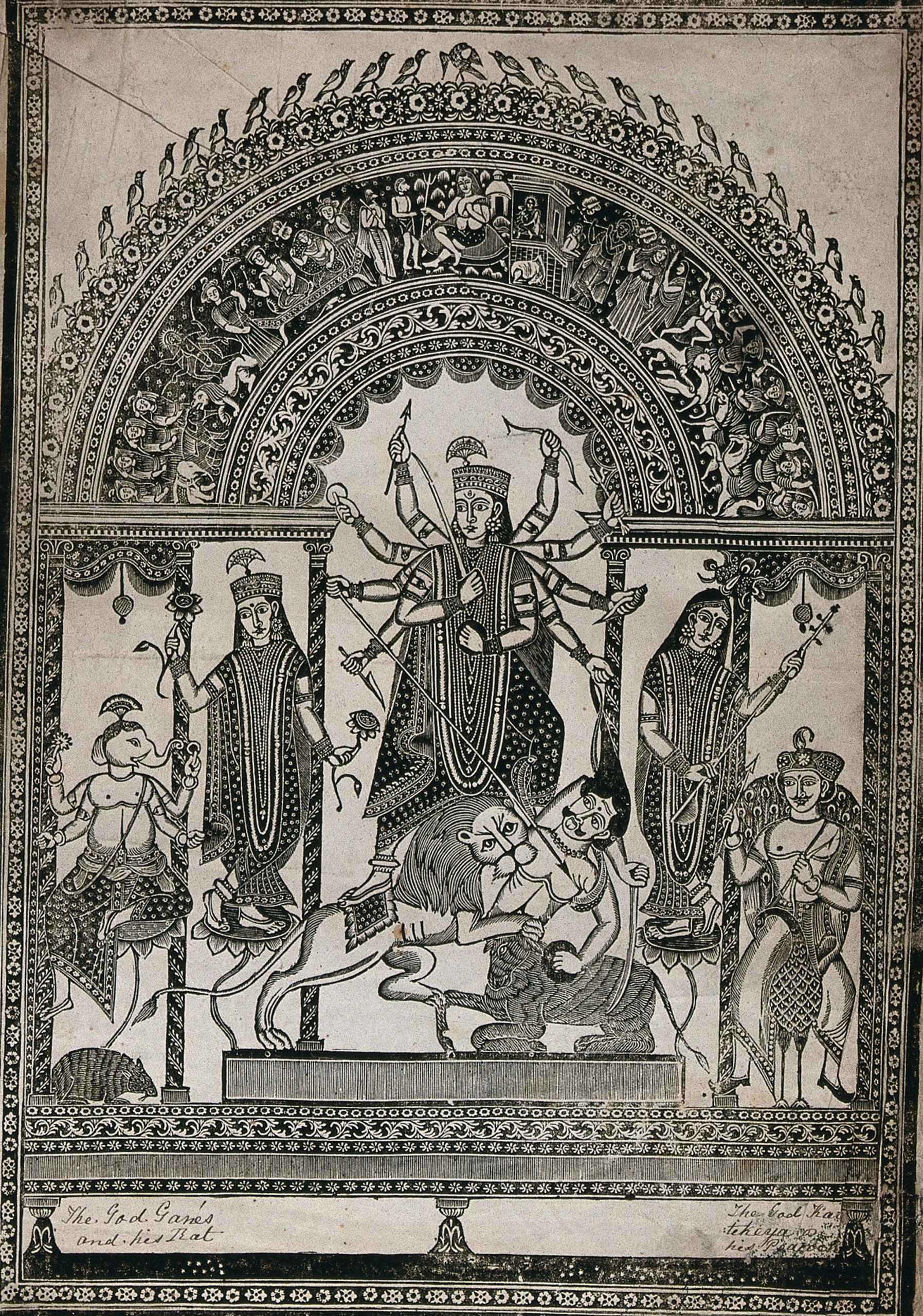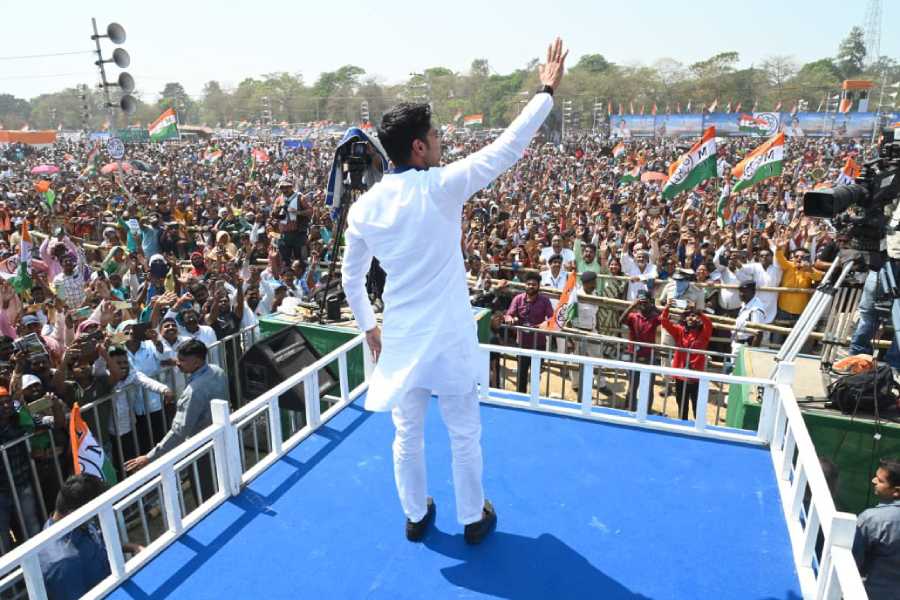Nature fights to remain in place, unfailingly appearing as the swaying ‘Khas’ flowers, announcing the arrival of Ma Durga, the slayer goddess of the Buffalo demon, Mahishasura. Durga Puja is also celebrated to remember invocation of the goddess by Rama, before going to war with Ravana. In Bengal, the puja is also known as ‘Akal-bodhan.’
The landlords of Dinajpur and Malda are believed to have initiated the first Durga Puja in Bengal around 1500 CE. The second theory is, Raja Kangshanarayan of Taherpur of Bhabananda Mazumdar of Nadia organized the Sharadiya or autumn Puja in Bengal in 1606. The pujas were a grandiose affair of the landlords displaying their wealth. Both Moghuls and the British officials used to attend the dazzling ceremonies. The British East India Company offered a thanksgiving puja in 1765 as a political act to appease its Hindu subjects, on obtaining the Diwani of Bengal. Even the Company’s auditor general John Chips organized a puja in his Birbhum office. The participation of the British continued until 1840 when the British government forbade its officials from their involvement in the Durga Puja.
The first ‘baro-yari’ puja was held in 1790 by twelve friends of Guptipara, Hooghly, who pooled in funds. Raja Harinath of Cossimbazar brought the baro-yari puja to Kolkata in 1832. The baro-yari gave way to Sarbojanin or community puja in 1910, when Sanatan Dharmotsahini Sabha organized the first such puja in Baghbazar in Kolkata. Thus, Durga freed herself from the shackles of the landlords and descend, mingle and mix with the commoners, blessing them all.
The soft mode of the pujas couldn’t resist the attention of the corporates, who found an ideal opportunity and a potential market. Bengal was spending more than half of their whole year’s budget on apparel, food and travel during the five-six days of the celebrations. The pujas used to begin on the day of Sashti, the sixth day from Mahalaya, until Vijaya Dasami, the tenth day. In came awards with significant prize money for the best idol, the best pandal, the best organized, the best theme and so on.
The hijack of community pujas thus began, when such celebrations became a scope for massive collections, often forcefully from traders and others. The idea of banners and gates evolved in addition to letting spaces for selling foodstuff or anything sold. The lure was so great that even the atheist communists never failed to erect a bookstall near many pandals selling ‘red’ books. They were always flanked by Ramakrishna Mission or such religious ones, both differing in ideologies but agreeing in principles of marketing.
Then came the era of the political takeover, as the communists were bundled out and the ‘pseudo-religiously-inclined’ landed en masse changing the profile of the pujas forever. Durga pujas were just a show of wealth, pomp and splendour, awing the visitors. Needless to state, the best were patronized or led by ministers, mayors and such higher ups. The inauguration of the pujas, usually on the eve of Saptami started moving forward and now have preceded even Mahalaya, the day the artisans draw the eyes of Durga, called ‘Chokku dan,” symbolically giving life into the idols.
The ‘Visarjan,’ or the immersion followed religious protocols of Hindu calendar, which were bundled out to accommodate other religious processions like Muharrum. The Visarjan is now when the powers ordain it to be, after a carnival of selected idols marching through essential thoroughfares of the city. The capture of the goddess by political forces seems complete with organizing clubs being paid doles of Rs.25000 each, out of the government treasury for their loyalty. Notwithstanding the gestures, more than 500 clubs are inviting the prime opponent party BJP to inaugurate their pujas.
The pujas are an economy-booster dose for an otherwise industry-starved state, which seemingly is content with cultural activities of every kind to thrive and engage with its citizens. Durga Puja offers the best opportunity such!
Sampath Kumar
Intrépide Voix



